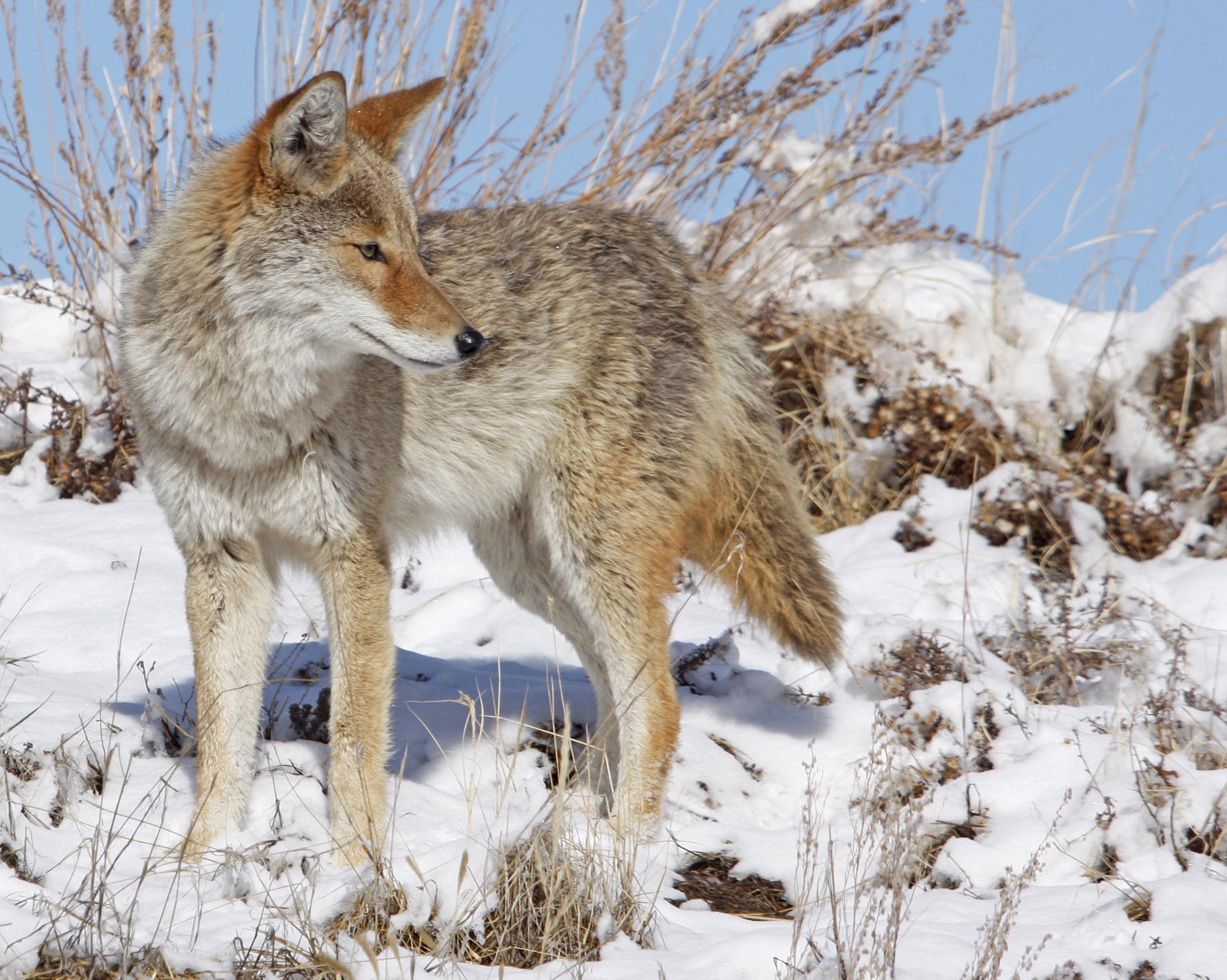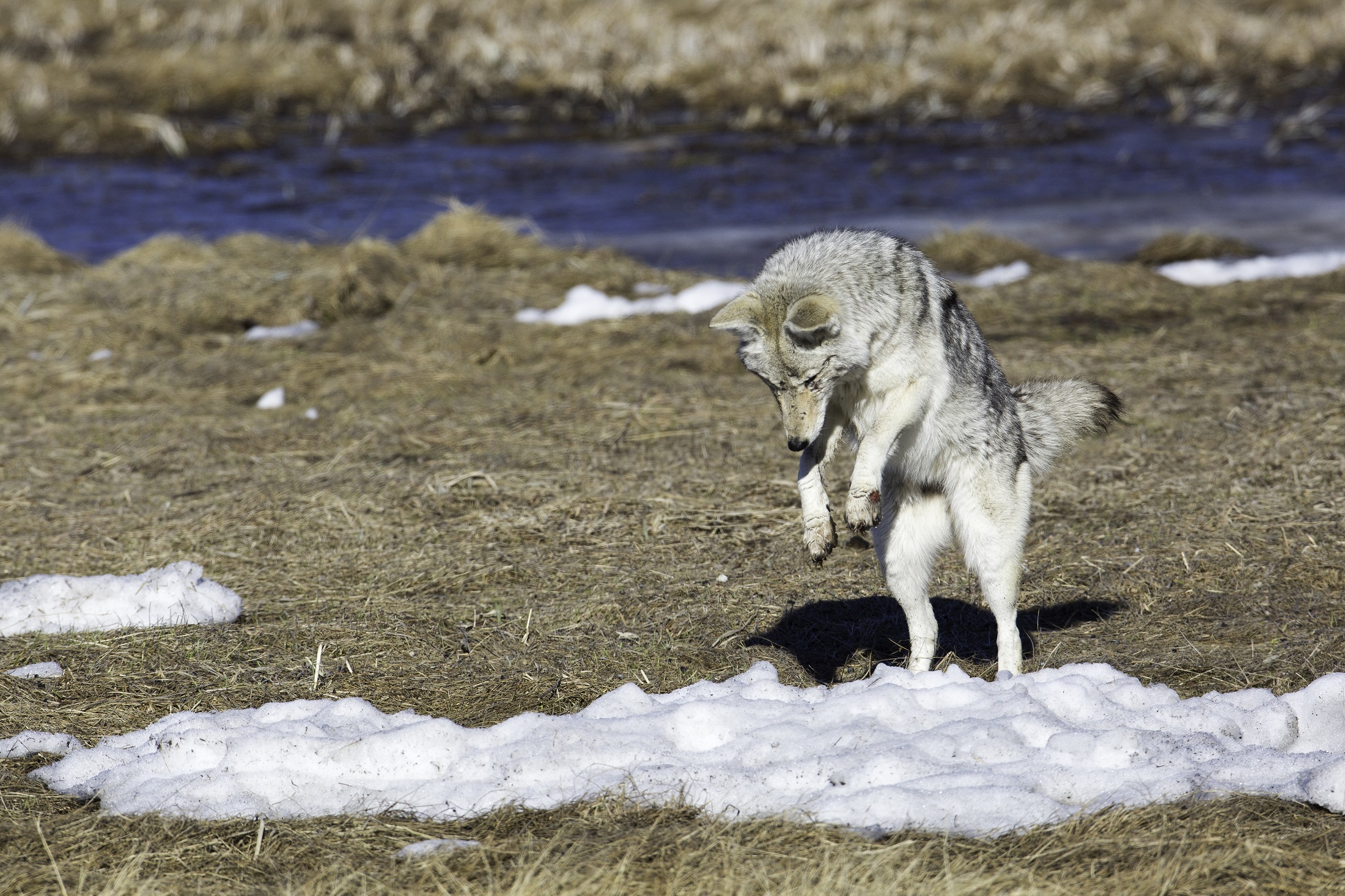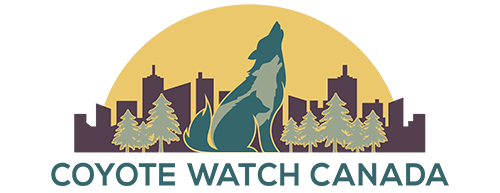A few years ago, while traveling back to London, Ontario, I stopped in Cambridge to give my Red and White Husky a little exercise reprieve. In an isolated part of a heavily vegetated park, I briefly let her off leash. I paused a moment, then gave a peering, baffled look; we were seemingly staring into a mirror. A wild dog-like being of the near exact colour markings of my dog stared back at us from a really close distance just ahead on the pathway. Some might say, “Was it rabid? Did you report it? How did you save your dog and self from the terror before you?” In fact, I reveled in the experience and wished it would have lasted longer. I felt no fear. Was I just lucky?

Not long after this chance encounter, some people started really talking up fear about these animals moving into urban areas. “They’ll attack you and your pets. They’ll pass along disease. They’re so destructive.” No, I’m not talking about humans. I’m talking about Canis latrans; the relatively ‘new species on the block’, the Eastern Coyote.
Known in some indigenous cultures as the trickster or joker, the coyote also symbolizes the deep magic of life. They are also known to be the revealers of truth behind illusion. I feel in this day and age we could use all the magic and truth we can get.
Coyotes are a heck of a lot like humans. Intelligent, they are opportunists. They learn quickly and adapt. They love their families (even more so than many human families!). Also remarkably similar, E. Coyotes, like European settlers and recent immigrants, aren’t technically native to S. Ontario. Paradoxically, the inception of these animals was borne out of the early and short-term successful efforts to blast away all predators from the province. Our misguided settler-ancestors killed off the Eastern Wolf – nearly – except for a small population in the Algonquin Park area. A common saying in ecology is ‘nature abhors a vacuum.’ With the near destruction of the wolf population, few medium sized predators remained and there was a huge void. The much smaller Western Coyote moved into Eastern North America’s newly destroyed landscape. In an extremely rare case, a speciation event occurred before our very eyes. Western Coyote hybridized with the few remaining Eastern Wolves. The hybrid created was a slightly larger animal, the Eastern Coyote. Western Coyotes were pushed back to the south, and west. This all occurred between the late 1800s until the 1930s or so. Since then, E. Coyotes have spread across Eastern North America, not just in rural landscapes, but taking up residence in cities, now fully a part the urban ecosystem. (Photo of my late dog Faith – a Siberian Husky and E. Coyote look-a-like)
For the record, E. Coyotes have, on rare occasions in the past, interbred with dogs gone feral. This virtually never happens today. The terms ‘Brush Wolf’, ‘Coywolf’ and ‘Coydog’ and general descriptive terms that refer to E. Coyote and not some other hybrid animal that’s ‘out there.’ And what is out there? You can be sure that E. Coyotes are. Like magic, they are often present but almost never seen. If they do appear, it’s in a flash and are gone just as fast.
Ecologically, Coyotes might just be a key savior in the recovery of our loss of biodiversity (the number of species of plants, animals, and other life forms in a given area). It’s like the story on how the return of the wolves completely transformed Yellowstone. Our natural areas are besieged with plants from other parts of the world (non-native species). You would think adding plants from other parts of the world increases diversity. The opposite is true. We lose species, primarily because non-native plants displace our native plants. Rich diverse soils are best created by a wide range of native plants that in turn provide food for insects. Insects convert plants to protein, providing the building blocks (food) for birds, mammals, reptiles and amphibian diversity.
One non-native grass you might be familiar with is Poa pratensis – Kentucky Bluegrass or the common lawn grass. It’s not from Kentucky…it’s form Europe and Asia. Forming thick mats of dried dead grass, this species proves a tough place through which recently germinated oak acorns try to emerge. If the oaks can survive the allelopathic effects of the grass (another story completely), they have another major barrier; voles, mice, shrews and other rodents. This non-native grass has allowed for the proliferation of explosive numbers of rodents. Young oak seedlings are delicious to rodents and so, the smorgasbord of Quercus is chewed up liberally and biodiversity gets socked solidly in the mid-section. Oaks have been steadily disappearing from our landscape.
Quercus, the genus of oaks comprised of dozens of species in N.A., is the top supporter and producer of many insects (see Douglas Tallamy’s tally of this ‘Best Bets: What to Plant‘ to Bringing Nature Home)
Here’s where Coyotes in healthy numbers in our urban and rural landscape can build biodiversity back; a major food source is rodents. Ever see your dog do this jump up and pounce thing (see photo of Coyote below)? My young Siberian Husky is currently the average weight and size of an Coyote (40 lbs). She sniffs out and pounces on Short-tailed Shrews in our backyard. She can catch at least 3 or 4 a day, in a tiny area in an urban setting. While more research needs to be done, Coyotes must be having an impact in the similar manners as the wolves in Yellowstone.

But everyone (ok, many people) wants to talk about the (perceived) negative impacts of Coyotes. (Photo of a coyote mousing)
What is the ‘risk of Coyote’ in perspective with other wildlife? Let’s take the White-tailed Deer. An average of 200 people each year die from collisions with deer on highways in North America. Thousands more contract Lyme’s disease from rising population of deer and thus deer ticks.
And family dogs? About 40 people each year in N.A. are killed from the results of domesticated dog attacks. How about dogs killing other dogs or killing cats? The numbers are through the roof. How about Coyotes? The average human deaths per year caused by Coyotes – zero.
Yes, E. Coyotes can attack, injure, and, in extremely rare cases, even kill your dog or cat. If you’re really concerned, keep an eye on your pets and keep them on leash, avoid dusk and dawn walks if that will make you feel safer. Don’t leave garbage accessible; this only draws in urban wildlife. As for deer on the highway, similar precautionary approaches apply; wear your seat belt, don’t speed (especially at night), and be vigilant about scanning the road as your drive.
Again, the important point is perspective; the stereotype of Coyote as ‘big bad wolf’ just does not hold water. Remember, without even knowing it, every day, millions of people and or their pets are within a few feet of where a Coyote had been a few seconds earlier.
A few days ago I saw a Coyote down in a 175-acre urban natural area (The Coves) a stone’s throw from my house. It was just a glimpse, as I had really startled this animal and she ran away quickly. It got me thinking about this recent spate of fear-based rhetoric about these animals and this is why I have written this article. The facts speak for themselves; the risks are small, and the incidents are isolated. Coyotes are scapegoats in a world in which we continually overplay risks using fear-based statements that morph into ‘facts’, while ignoring larger and real looming issues, easily traced to truths. Fittingly, this is what the indigenous traditional knowledge tells us about what Coyotes represent; revealers of truth behind illusion.
It’s clear that Coyotes have great voices of their own, revealing truth and the magic of life in many ways. Most of us refuse to listen; about 400,000 Coyotes are deliberately killed each year in North America. Changing their pack structure and breeding strategies when targeted, Coyotes rebound to recover their population losses by the very next year.
We can’t out-smart the Coyote. We don’t even need to. As a part of planet in dire need of ecological recovery, our efforts can shift to gratitude and appreciation of Coyotes – they are so much like us – while focusing on the science-based solutions to issues that we know truly matter.
About our guest author:
Ben has over two decades of experience in wildlife biology and ecology, non-profit management, environmental consulting, and sustainable living. Now living in a densely populated area of a London, Ontario, his property consists of over 200 species of native plants, including a wetland, all visited by many species of wildlife, seldom observed in the downtown of a city. Before the recent era of rapid renewable energy expansion, he gained expertise on living off grid. Ben lived remotely off the grid for over a decade with solar panels, a wind turbine, composting toilets and a rainwater collection system.
Ben has also been contracted to work with First Nations communities, completing wildlife and plant inventories and reviewing impacts of proposed renewable energy developments on Traditional territorial lands. This included completing an extensive Traditional Medicinal Native Plant Inventory and Procurement Program. Over the past two years, Ben has become the first certified Forest Therapy (a.k.a. Shinrin Yoku or Forest Bathing) guides in Canada.
Ben's popular blog (www.lostandfoundinnature.com and origin for 'Embracing the Urban Coyote') features posts on spiritually reconnecting with nature, plants and animals in efforts to get more people outside to experience nature first hand. Ben's company, Restorative Nature Experiences (www.restorativenatureexperiences.com) is an alchemy of his ecological, environmental and spiritual journeys, offering guided walks, workshops, training courses and one on one guidance. Recently, Ben has co-founded and leads the Global Institute of Forest Therapy (GIFT) www.giftoftheforest.ca .

